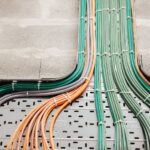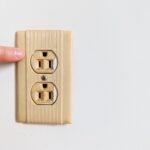Understanding photovoltaic inverters
Photovoltaic inverters are essential components in solar energy systems. These devices convert direct current (DC) from solar panels into alternating current (AC) for use in homes and businesses. A typical inverter can handle between 1,000 and 8,000 watts of power. The efficiency of modern inverters ranges from 95% to 98%. Photovoltaic inverters come in various sizes and types to suit different installation needs.
There are two main categories of inverters: string inverters and microinverters. String inverters are connected to multiple solar panels in a series. Microinverters are attached to individual panels. The choice between these types depends on factors such as roof layout, shading, and budget. String inverters are generally less expensive but may be less efficient in partially shaded conditions.
Inverter technology has advanced significantly in recent years. Modern inverters often include features like Wi-Fi connectivity for remote monitoring. Some models can even provide data on individual panel performance. This information helps homeowners and technicians optimize system efficiency and identify potential issues quickly.
Choosing between 3 phase and 1 phase inverters
The decision between 3 phase inverters and 1 phase inverters depends on the electrical setup of the building. 3 phase inverters are typically used in commercial or large residential installations. These systems can handle higher power outputs, often exceeding 10 kilowatts. They distribute power more evenly across three separate AC waves.
1 phase inverters are more common in smaller residential setups. They’re suitable for systems up to about 8 kilowatts. Most homes in the United States and many other countries use single-phase power. This makes 1 phase inverters the default choice for many residential solar installations.
The efficiency difference between 3 phase and 1 phase inverters is minimal. Both types typically operate at over 95% efficiency. The main advantage of 3 phase systems is their ability to handle larger loads more effectively. They also provide more stable power output, which can be beneficial for certain appliances and equipment.
Integrating inverters with energy storage systems
Photovoltaic and energy storage systems are becoming increasingly popular. These setups allow excess solar energy to be stored for later use. A typical home battery system can store between 10 and 13.5 kilowatt-hours of energy. This is enough to power an average home for about 24 hours.
When integrating storage with solar, there are two main approaches: AC coupling and DC coupling. AC coupling involves connecting the battery to the existing solar inverter. DC coupling uses a special hybrid inverter that manages both solar panels and batteries. DC coupling is often more efficient, with energy losses of only about 2% compared to 4-8% for AC coupling.
The choice of inverter becomes crucial when adding storage to a solar system. Some inverters are designed to be “storage ready,” allowing for easy future integration of batteries. Others may require additional equipment or replacement to work with energy storage. It’s important to consider future expansion plans when selecting an inverter for a new solar installation.
Maintenance and longevity of photovoltaic inverters
Proper maintenance is key to ensuring the longevity of photovoltaic inverters. Most inverters have a lifespan of 10 to 15 years. However, with good care, some can last up to 20 years. Regular inspections should be performed at least once a year. These checks can identify issues like loose connections or dust accumulation.
Inverters typically have no moving parts, which reduces the need for mechanical maintenance. However, they can be sensitive to environmental factors. Extreme temperatures, both hot and cold, can affect performance and lifespan. Installing inverters in a sheltered, temperature-controlled area can help extend their life.
Many modern inverters come with self-diagnostic capabilities. These features can alert owners to potential problems before they become serious. Some common issues include:
- Communication errors
- Grid voltage fluctuations
- Overheating
- Ground faults
Prompt attention to these alerts can prevent system downtime and costly repairs.





